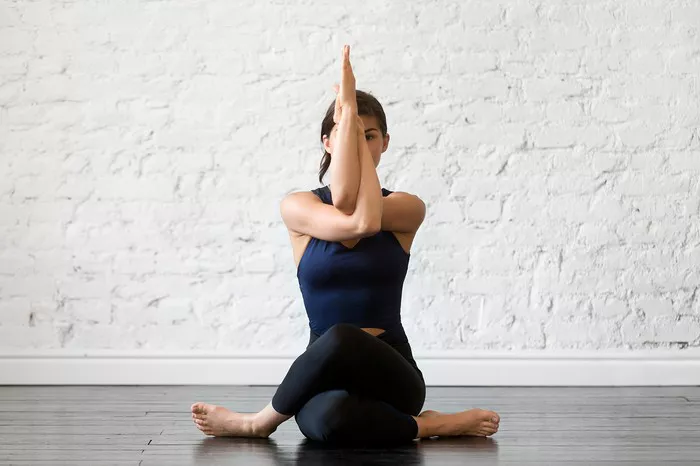In recent years, mindfulness meditation and yoga have gained widespread popularity for their potential benefits on mental, emotional, and physical well-being. While often practiced separately, the combination of mindfulness meditation and yoga can offer a synergistic approach to holistic health. This article explores the principles, practices, and potential benefits of integrating mindfulness meditation with yoga.
Understanding Mindfulness Meditation
Mindfulness meditation is a practice rooted in ancient Buddhist traditions, which has been adapted and secularized for modern contexts. At its core, mindfulness meditation involves cultivating present-moment awareness and non-judgmental acceptance of one’s thoughts, feelings, and sensations.
Key Components of Mindfulness Meditation:
1. Attention: Mindfulness involves directing attention to the present moment, whether it’s focusing on the breath, bodily sensations, or external stimuli.
2. Acceptance: Rather than trying to change or suppress experiences, mindfulness encourages acceptance of whatever arises in the present moment, including thoughts, emotions, and physical sensations.
3. Non-judgment: Mindfulness cultivates an attitude of non-judgmental awareness, allowing experiences to be observed without assigning value judgments or labels.
Practicing Mindfulness Meditation:
- Sit in a comfortable position, with eyes closed or gently lowered.
- Focus attention on the breath, sensations in the body, or a chosen anchor.
- Notice when the mind wanders and gently bring attention back to the present moment.
- Cultivate an attitude of openness, curiosity, and kindness towards one’s experiences.
Understanding Yoga
Yoga is a multifaceted discipline originating from ancient Indian philosophy and encompassing physical postures (asanas), breath control (pranayama), and meditation techniques. While yoga has become synonymous with physical exercise in many contexts, its true essence lies in the integration of body, mind, and spirit.
Key Components of Yoga:
1. Asanas: Yoga postures are designed to promote flexibility, strength, and balance in the physical body while also facilitating mental focus and relaxation.
2. Pranayama: Breathing exercises in yoga help regulate the flow of prana (life force energy) in the body, promoting vitality and mental clarity.
3. Meditation: Yoga encompasses various meditation techniques, including concentration practices, mantra repetition, and guided visualization, aimed at calming the mind and deepening self-awareness.
Practicing Yoga:
- Start with a gentle warm-up to prepare the body for physical postures.
- Move through a series of asanas, paying attention to alignment, breath, and sensations in the body.
- Incorporate pranayama techniques to regulate and deepen the breath.
- Conclude with a period of relaxation or meditation to integrate the benefits of the practice.
- Integration of Mindfulness Meditation and Yoga
When mindfulness meditation and yoga are integrated, they create a powerful synergy that enhances self-awareness, emotional regulation, and overall well-being. By combining the principles and practices of both modalities, individuals can cultivate a deeper understanding of themselves and their relationship to the world around them.
Key Elements of Integrating Mindfulness Meditation and Yoga:
1. Present-Moment Awareness: Mindfulness meditation cultivates present-moment awareness, which can be seamlessly integrated into yoga practice. By paying attention to the sensations, breath, and alignment during yoga asanas, practitioners deepen their connection to the present moment.
2. Non-judgmental Acceptance: Yoga encourages non-judgmental acceptance of one’s physical abilities and limitations. When combined with mindfulness meditation, this attitude of acceptance extends beyond the physical body to include thoughts, emotions, and inner experiences.
3. Breath Awareness: Both mindfulness meditation and yoga emphasize the importance of breath awareness. By integrating mindful breathing techniques into yoga practice, individuals enhance their ability to stay present, calm the mind, and navigate challenges on and off the mat.
4. Body-Mind Connection: Yoga postures serve as a bridge between the body and mind, providing opportunities for self-exploration and inner transformation. When practiced mindfully, yoga becomes more than just physical exercise; it becomes a moving meditation that fosters self-awareness and self-discovery.
Benefits of Integrating Mindfulness Meditation and Yoga
While the benefits of yoga are well-documented, the integration of mindfulness meditation amplifies these benefits by fostering deeper self-awareness, emotional resilience, and inner peace. Some potential benefits of integrating mindfulness meditation with yoga include:
1. Stress Reduction: Mindfulness meditation and yoga are both effective tools for reducing stress and promoting relaxation. By cultivating present-moment awareness and relaxation responses in the body, individuals can mitigate the effects of chronic stress and enhance their overall well-being.
2. Emotional Regulation: The combination of mindfulness meditation and yoga enhances emotional regulation skills, allowing individuals to navigate difficult emotions with greater ease and equanimity. By cultivating non-reactivity and acceptance of inner experiences, practitioners develop a more balanced relationship with their emotions.
3. Improved Concentration: Both mindfulness meditation and yoga improve concentration and mental focus. By training the mind to stay present and focused during yoga practice, individuals enhance their ability to sustain attention in everyday activities, leading to increased productivity and mental clarity.
4. Enhanced Self-Awareness: Mindfulness meditation and yoga deepen self-awareness by encouraging introspection and self-reflection. By tuning into the body, breath, and inner experiences, individuals gain insight into their patterns of behavior, thoughts, and emotions, leading to personal growth and transformation.
Conclusion
The integration of mindfulness meditation and yoga offers a holistic approach to health and well-being, fostering self-awareness, emotional resilience, and inner peace. By combining the principles and practices of both modalities, individuals can cultivate a deeper connection to themselves and the world around them, leading to greater fulfillment and vitality in life. Whether practiced separately or together, mindfulness meditation and yoga serve as powerful tools for promoting holistic health and living with intentionality in an increasingly fast-paced world.
















